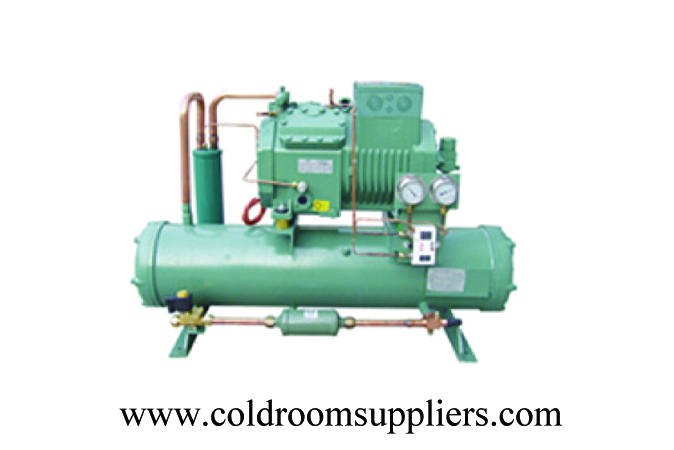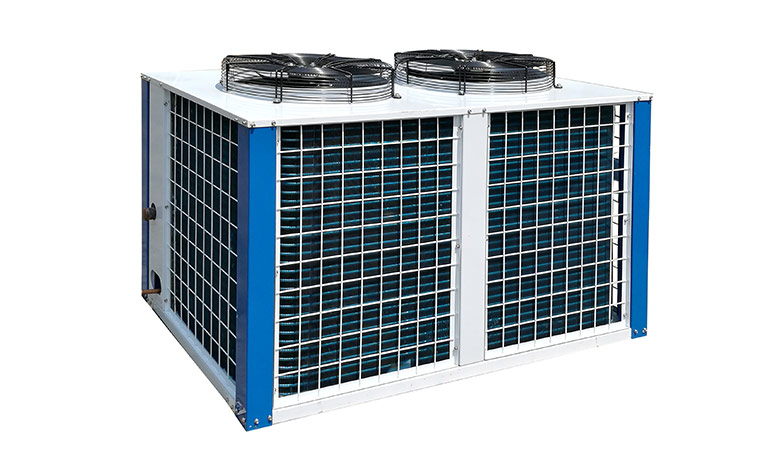With the development in the refrigeration field, many large-size instant frozen devices, ice-making units, and large-scale refrigeration storage are coming to the market. Among these, some units are unable to work on a large scale. So, we are introducing this upgraded two-stage water-cooled screw condensing unit. With -50~-30℃ temperature settings, this condensing unit meets your wide-scale refrigeration needs.
In systems involving heat transfer, a condenser is a heat exchanger used to condense a gaseous substance into a liquid state by cooling it. In doing so, latent heat is released from the substance and transferred to the surroundings. In many industrial systems, condensers are used for efficient heat dissipation. Condensers can be manufactured to a wide range of designs and come in a variety of sizes, from fairly small (handheld) to very large (industrial-scale units used in factory processes). For example, refrigerators use condensers to dissipate heat extracted from inside the unit to the outside air.
Condensers are used in air conditioning, industrial chemical processes such as distillation, steam power plants, and other heat exchange systems. The use of cooling water or ambient air as a coolant is common in many condensers.

Upgraded Two-Stage Water-Cooled Screw Condensing Unit
In most cases, the condenser is a shell and tube (S&T) or air fin (AF) exchanger. an S&T unit may have processed condensation on either the tube side or the shell side. Condensation on the shell side is more common. Two factors drive this: pressure drop and the choice of cooling utility. Systems handling steam usually have a high volume flow rate. Placing steam in the shell process makes it simpler and cheaper to maintain a low-pressure drop. Corrosion issues when using cooling water is the most popular cooling utility and there is almost always a preference for placing water on the tube side.
The choice of the most efficient condenser for a service depends on both process and non-process parameters.
Proximity to temperature. Common S&T designs have temperature cross limits that prevent the process outlet temperature from being significantly lower than the utility outlet temperature. The approach to proximity temperature requires multiple enclosures to be connected in series in a process or special design. A sufficiently large AF exchanger can achieve close temperature approaches as the air entering the bottom of the AF exchanger cross-flows with the tubes.
Ventilation. Start-up usually requires air to be exhausted from the unit. In addition, even many full condensing processes may accumulate traces of non-condensable, or a fault may introduce non-condensables into the system. the exhaust ducting of the AF exchanger is the simplest. The exhaust of an S&T exchanger with shell-side condensation can often be achieved by careful design. Venting of S&T heat exchangers with tube-side condensation is difficult.

Copeland Air-Cooled Hermetic Compressor Unit
Wide range of condensing mixtures. Phase separation can occur in a wide range of condensing mixtures. Once separated, the partially condensed vapor may no longer contain enough heavy material to continue condensing. This can lead to problems with shell and tube condensation in multi-pipe processes. All solutions to this require some combination of single-pass tube-side condensation or higher pressure drop on the shell side.
Unit cost. This includes the cost of the exchanger, structure, motor control, and utility piping within the unit and its installation. Typically, the cost of an AF exchanger is usually higher than an S&T unit if the cooling tower is ignored.
Total cost. This includes any cooling towers, water treatment, and any piping outside the unit boundaries. In general, the total cost of most AF units is low if the area is available and the air temperature is suitable for the process requirements.
Please contact us if you need a two-stage water-cooled screw condensing unit for other refrigerants. Moreover, this Two-Stage Water Cooled Screw Condensing Unit with all measurements and parts is compatible with the R22 refrigerant.
